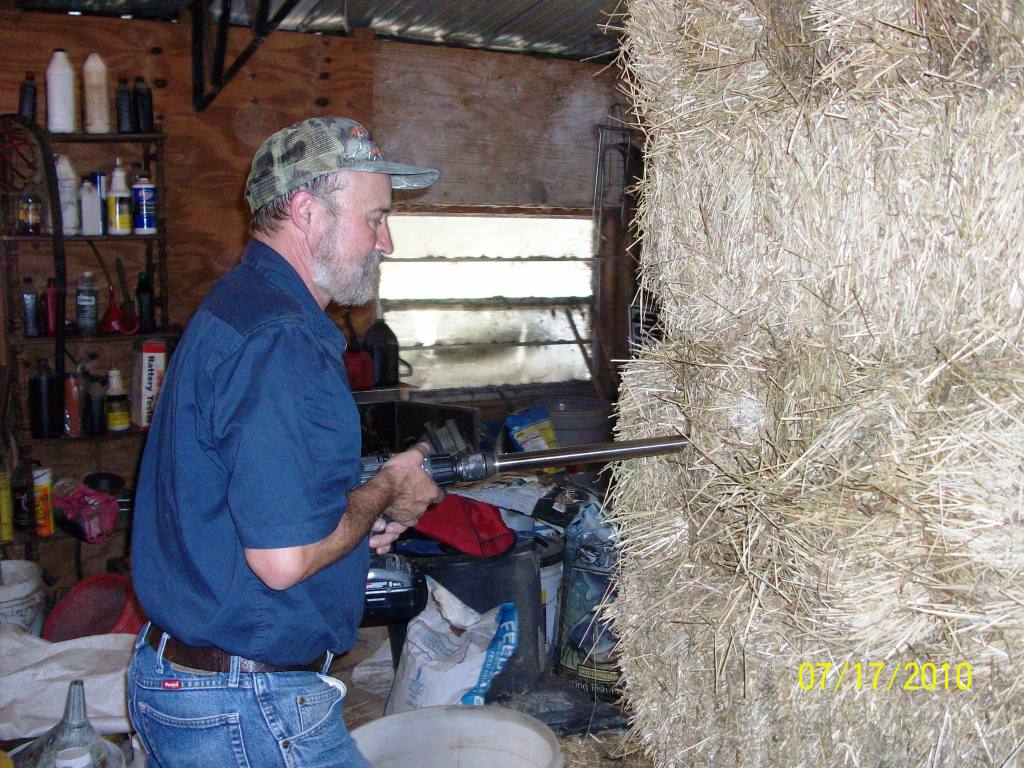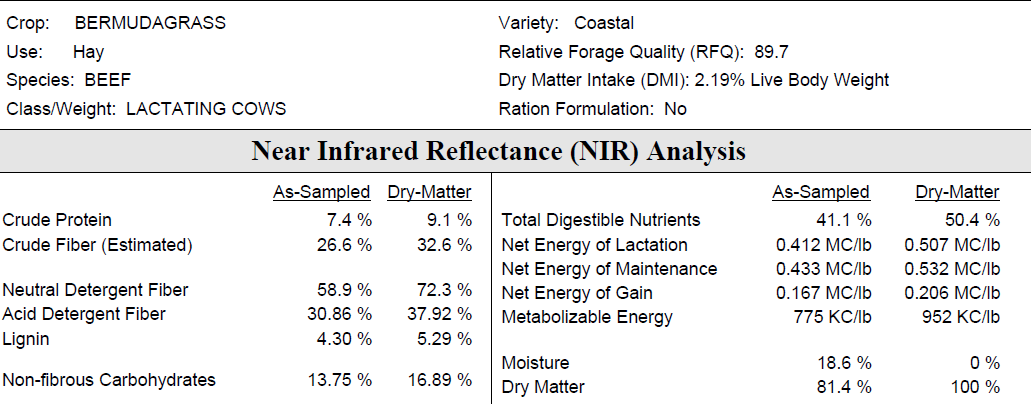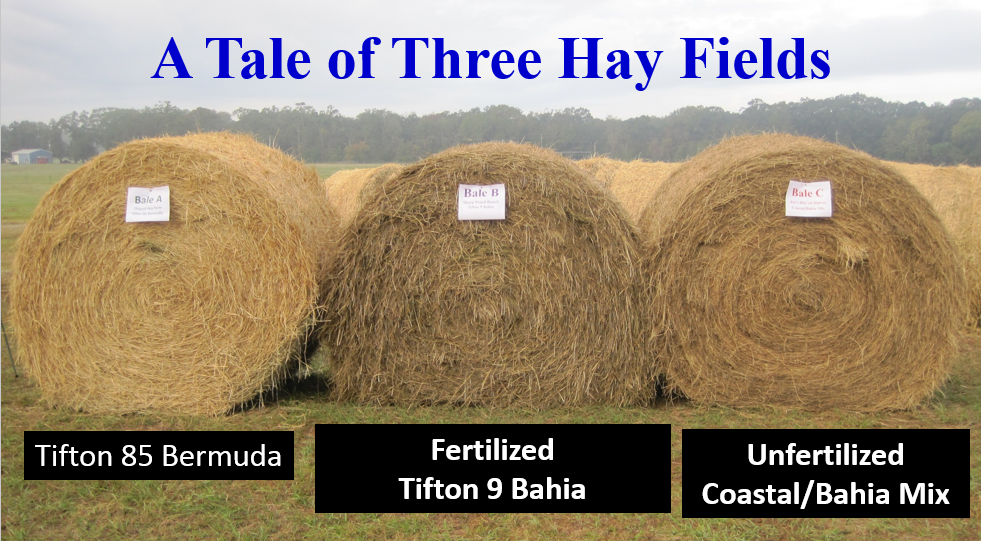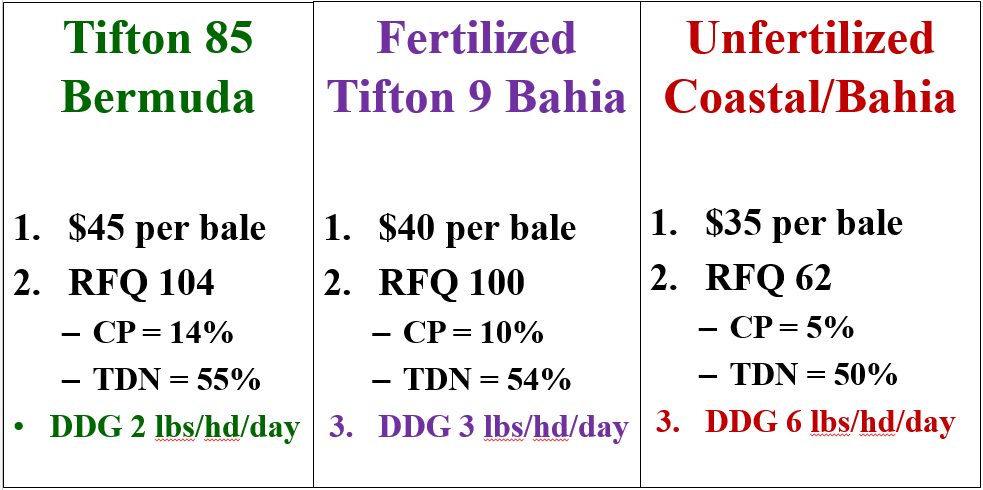
Once you send in a hay sample for analysis, you have to know what the numbers mean to make winter supplement decisions.
Just as soil testing can provide vital information on how to fertilize crops, forage testing can provide vital information on how to supplement hay fed to livestock. Feed and fertilizer are simply too valuable these days to simply guess, or just use the same amount use last year. Weather, fertility, growing and harvest conditions, forage variety, and age at harvest, create considerable variation in the quality of hay produced each year. Not to mention the variation from farm to farm, if you are buying the hay you feed. The only way to truly know how to meet the nutritional needs of your herd is to test the quality of the hay that serves as the base of your winter ration.
After you have sent your hay or baleage samples to a lab for analysis, it is important to understand the information provided by lab in their summary report. Just like all of the EPD’s and performance information provided on a bull sold from a bull test, you have to know what all of the numbers mean in a forage test report to know how to use them. The following is a sample report from some typical, mature Coastal Bermudagrass hay cut only twice per year. Some basic definitions make this report much more user friendly.
 RFQ
RFQ
Relative Forage Quality or RFQ is an index, much like EPD’s for cattle, that combines a number of important quality characteristics of forages to provide a single number to use for comparisons. RFQ takes the digestible energy an estimate of animal intake to provide a single number to use for comparisons. Higher is better, so a hay with an RFQ score of 120 would be much better quality than hay that had a . RFQ is most useful for marketing or purchasing hay. While it does serve as a simple guide of quality, it would not be most useful to guide supplement purchasing decisions.
Intake
Dry Matter Intake or DMI is an estimate of how much an animal will consume, based on the digestibility of the fiber in the hay. This is a calculated value that provides an estimate of the amount of hay each animal will consume each day. For the sample above a 1,000 pound cow would be expected to eat 22 pounds each day.
As-Sampled vs Dry-Matter
The moisture content of forages is never constant. In the sample above the hay contained 18.6% water. Since the water provides no nutrients, to compare quality you always want to use the dry matter column. If you were actually mixing a feed, you have to use the as-fed information. Since hay is normally fed free-choice, it is most useful to work with the dry-matter information to select the correct supplement, and be able to compare forage samples with varying moisture content.
Crude Protein
For years livestock producers have use the protein level of hay to try an estimate value. With the creation of RFQ, we now have a better single number to use for comparisons. Crude Protein (CP) is based on the nitrogen content of the feed. This is why fertilization with nitrogen fertilizer does greatly enhance the protein levels of hay. Legumes produce their own nitrogen fertilizer through bactreria on their roots, and generally have even higher protein levels than grasses. Protein is one of the nutrients for livestock growth and performance, but it is simply a matter of providing what the animal needs. Proteins levels in hay below 7% can drastically reduce intake.
Fiber
Fiber is a key measurement of digestibility. The more mature, or older the forage, the higher the fiber content. Neutral Detergent Fiber (NDF) is the total fiber component of a forage used to estimate intake, or daily consumption. As the NDF percentage increases, intake declines. Acid Detergent Fiber (ADF) is the level of indigestible fiber, that can’t be used by the animal. ADF is used to develop an estimate of nutrient availability.
Energy
Energy is the nutrient that keeps an animals systems working, and is vital for all of the body functions. All too often the hay we produce in the South comes up well short of the energy demands of the livestock we feed it to. Animals become thin, weak, and sickly when inadequate energy is provided. Total Digestible Nutrients (TDN) is the value most often used to evaluate the energy available for ruminant animals for seleting supplements. The greater the value the more energy-dense the feed. TDN levels below 50% can reduce animal intake. The other energy measures are more commonly used for more precise feedlot and dairy ration formulations.
A Real World Example
Once you understand the forage test report, you can then start piecing together how to supplement your herd. You do have to know the nutrient requirements of the animals you are feeding. There are publications that provide this information. For instance, a 1200 pound cow that routinely weans calves that average 550 pounds would have nutrient requirements of 10% CP and 58% TDN during peak lactation. To meet the needs of this highly productive cow a rancher decides to compare three sources of hay for sale at neighboring farms. Nearby three farms are offering premium quality Tifton 85 Bermudagrass hay for $45/bale, good quality fertilized bahia for $40/bale, or $35/bale of unknown management. It is very difficult to know which of these would be the best hay for the money. Once you get a forage test report, however it does become more clear. To meet the requirements mentioned earlier very few single feed supplements can meet the protein and energy shortfalls of the discount priced hay. Dried distillers grain (DDG) are available as by-product feeds from ethanol plants that are high in both protein and energy. In this scenario it would take 2 pounds of DDG/day to supplement the Tifton 85 hay, 3 lbs/day for the bahia, and 6 lbs/day for the poor quality hay. One other thing to consider is that even with double or triple the supplement, the cows might still lose weight when fed such poor quality hay, due to reduced hay intake. Depending on the price of the DDG and the type hay available in your area, the average quality hay may be the best for the money. At least with the information provided from a forage test, you can make a well informed decision.

Forage testing is not complex, but you don’t want to just send in a grab sample from the outside layer of a single bale of hay. To do the job right, you need a forage probe that can be drilled through to the core of the bale to collect a ground-up, cross-section of at least 5-10 bales. Forage tests cost as little as $12 per sample, yet provide valuable nutritional information to use to balance rations for the various classes of livestock on your farm. Work with your local County Agriculture Extension Agent to have your hay or baleage tested, so that you can make informed decisions about feeding your livestock this winter.
More resources that provide additional information on this topic:
Understanding and Improving Forage Quality
Interpreting Forage and Feed Analysis Reports
- Making the Most of High Cattle Prices – Grow More of Your Own Feed - July 18, 2025
- Friday Feature:1960 Corn Farmer - July 18, 2025
- June 2025 Weather Summary and Three-Month Outlook - July 11, 2025
